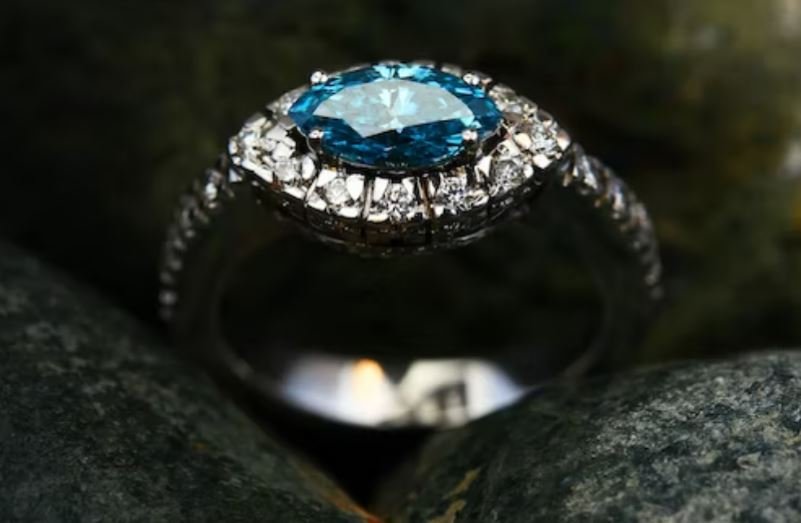
Sapphire, a precious gemstone, is a mineral called corundum in various colors. Sapphire’s history can be traced back to ancient civilizations, such as Greece and Rome, where it was believed to bring protection and wisdom to its wearers. Today, sapphire is still one of the most sought-after gemstones in the world, with a high demand for its beauty, rarity, and durability. You can find sapphire shops worldwide catering to those who desire this exquisite gemstone.
5 Factors Contributing to the Rarity of Sapphire
Sapphires are considered rare due to several factors, including:
-
Natural Occurrence
Sapphires are formed under specific geological conditions that are not commonly found in nature. This makes them relatively rare compared to other minerals and gemstones.
-
Color
Certain colors of sapphire are rarer than others. For example, blue sapphires are the most common, but pink, yellow, and green sapphires are much rarer.
-
Clarity
Sapphires with fewer inclusions and blemishes are rarer than those with visible flaws.
-
Size
Larger sapphires are rarer than smaller ones. Most sapphires are found in small sizes, and those above a certain carat weight are extremely rare.
-
Origin
Sapphires from certain locations are rarer than others. For example, Kashmir sapphires are extremely rare and highly prized for their unique velvety blue color.
All these factors contribute to the rarity of sapphire, making it a highly coveted gemstone.
4 Scientific Factors That Make Each Stone Unique in Its Own Way
Sapphire color is influenced by various scientific factors, including:
-
Trace Elements
The presence of trace elements in the crystal structure of sapphire determines its color. For example, blue sapphires contain iron and titanium, while yellow sapphires have iron and chromium.
-
Heat and Pressure
The heat and pressure that sapphire undergoes during its formation also affect its coloration.
-
Lighting and Environment
The color of sapphire can vary depending on the type of lighting and environment it’s viewed in. For example, blue sapphires may appear more vibrant in natural daylight, while yellow sapphires may appear more intense in artificial lighting.
-
Treatment
Sometimes, sapphires may be treated to enhance or alter their color. Heat treatment is a common method used to improve the color of sapphires
Overall, the color of sapphire is determined by a complex interplay of scientific factors, making each stone unique in its own way.
Read more: The World’s Most Famous Jewelry Brands
7 Rarest Colors of Sapphire You Should Know About
Accessorize with the beauty of the rarest sapphire colors. Get noticed with sapphire blue earrings, pink sapphire, orange sapphire, and green sapphire.
1. Pink Sapphire:
The story behind its discovery is unknown, but it gained popularity in the 1990s. Pink sapphire is different from pink diamond in terms of composition and hardness. Natural pink sapphire is rare due to the specific geological conditions required for its formation.
2. Orange Sapphire:
Orange sapphire has a distinct hue and saturation due to chromium and iron. It is less common than other sapphire colors, making it highly valued by collectors.
3. Green Sapphire:
Green sapphire has unique properties due to the combination of trace elements, including iron, titanium, and chromium. It is one of the rarest colors of sapphire due to the specific geological conditions required for its formation.
4. Padparadscha Sapphire:
The name “padparadscha” is derived from the Sinhalese word for lotus blossom. Padparadscha sapphire has a unique salmon-pink color with hints of orange. Due to its scarcity and demand, it is one of the rarest and most valuable sapphire colors.
5. Color Change Sapphire:
Color change sapphire displays different colors under different lighting conditions. The color change is due to trace elements, such as vanadium and chromium. It is a rare and highly prized sapphire color.
6. Purple Sapphire:
Purple sapphire comes in varying shades of purple due to the presence of iron and titanium. Natural purple sapphire is rare, making it highly valued by collectors.
7. Blue-Green Sapphire:
Blue-green sapphire combines blue and green hues, giving it a unique color. The presence of iron and titanium affects the coloration of blue-green sapphire. It is a rare and valuable sapphire color due to its scarcity.

The Cultural Significance of Sapphire Throughout History
- Sapphire has been revered by various cultures throughout history, including ancient Persians, Greeks, and Romans.
- In Christianity, sapphire is associated with the heavens, symbolizing divinity and spiritual enlightenment.
- In modern times, sapphire continues to be a popular gemstone due to its durability, beauty, and versatility.
- Sapphires are often used in engagement rings as an alternative to diamonds, with Princess Diana’s iconic sapphire engagement ring setting the trend in the 1980s.
- Famous sapphires throughout history include the Star of India, the Black Star of Queensland, and the Logan Sapphire.
Conclusion
Sapphire is prized for its scarcity, durability, and beauty. Color, clarity, size, natural occurrence, and provenance influence its rarity. Traces, heat, pressure, lighting, environment, and treatment affect the sapphire color. Pink, orange, green, padparadscha, color change, purple, and blue-green sapphires are rare. Sapphire has cultural significance and is used in engagement rings today.
Read more: Ear Candy: The Latest Trendy and Adorable Ear Piercing Ideas


